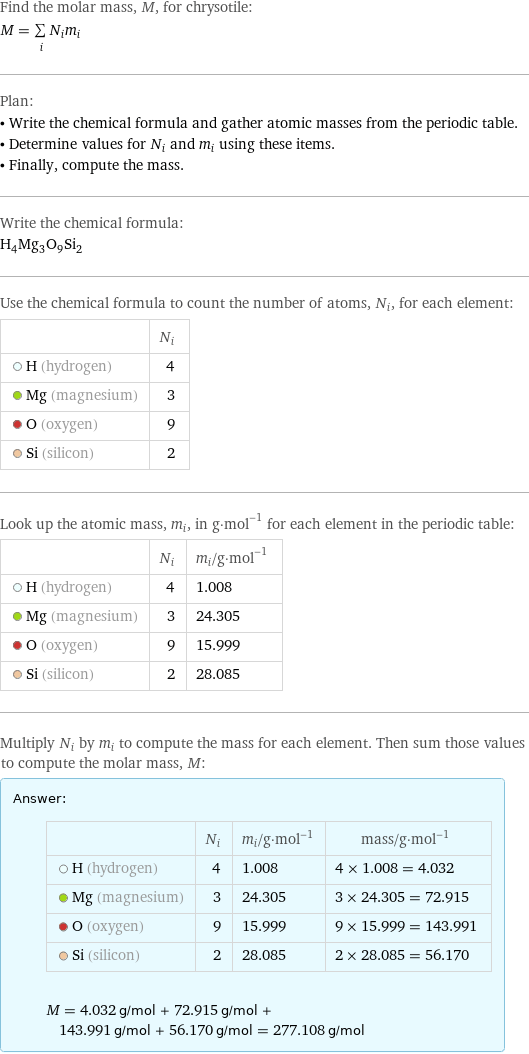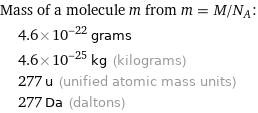Input interpretation

chrysotile | molar mass
Result

Find the molar mass, M, for chrysotile: M = sum _iN_im_i Plan: • Write the chemical formula and gather atomic masses from the periodic table. • Determine values for N_i and m_i using these items. • Finally, compute the mass. Write the chemical formula: H_4Mg_3O_9Si_2 Use the chemical formula to count the number of atoms, N_i, for each element: | N_i H (hydrogen) | 4 Mg (magnesium) | 3 O (oxygen) | 9 Si (silicon) | 2 Look up the atomic mass, m_i, in g·mol^(-1) for each element in the periodic table: | N_i | m_i/g·mol^(-1) H (hydrogen) | 4 | 1.008 Mg (magnesium) | 3 | 24.305 O (oxygen) | 9 | 15.999 Si (silicon) | 2 | 28.085 Multiply N_i by m_i to compute the mass for each element. Then sum those values to compute the molar mass, M: Answer: | | | N_i | m_i/g·mol^(-1) | mass/g·mol^(-1) H (hydrogen) | 4 | 1.008 | 4 × 1.008 = 4.032 Mg (magnesium) | 3 | 24.305 | 3 × 24.305 = 72.915 O (oxygen) | 9 | 15.999 | 9 × 15.999 = 143.991 Si (silicon) | 2 | 28.085 | 2 × 28.085 = 56.170 M = 4.032 g/mol + 72.915 g/mol + 143.991 g/mol + 56.170 g/mol = 277.108 g/mol
Unit conversion

0.27711 kg/mol (kilograms per mole)
Comparisons

≈ 0.38 × molar mass of fullerene ( ≈ 721 g/mol )

≈ 1.4 × molar mass of caffeine ( ≈ 194 g/mol )

≈ 4.7 × molar mass of sodium chloride ( ≈ 58 g/mol )
Corresponding quantities

Mass of a molecule m from m = M/N_A: | 4.6×10^-22 grams | 4.6×10^-25 kg (kilograms) | 277 u (unified atomic mass units) | 277 Da (daltons)

Relative molecular mass M_r from M_r = M_u/M: | 277